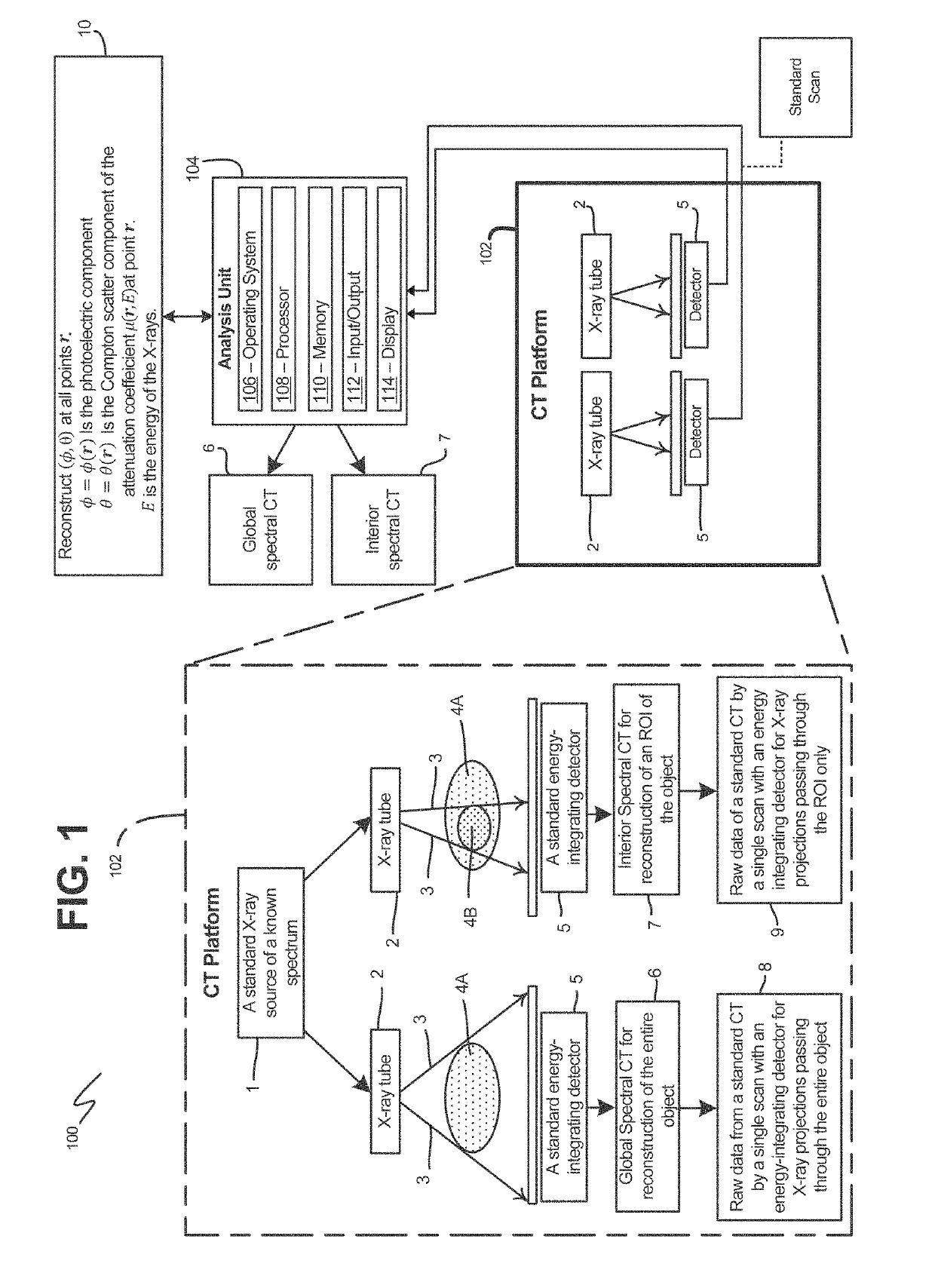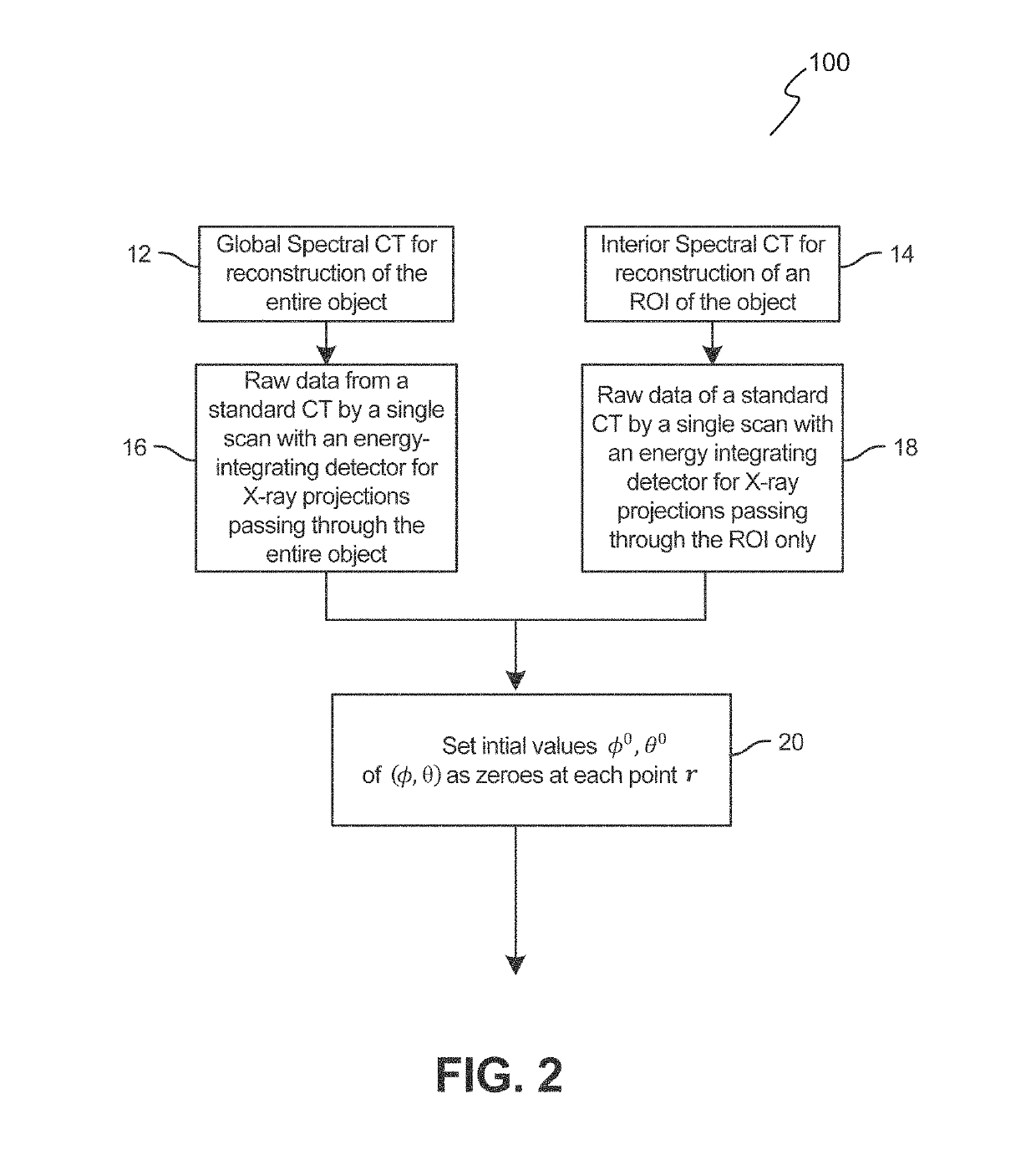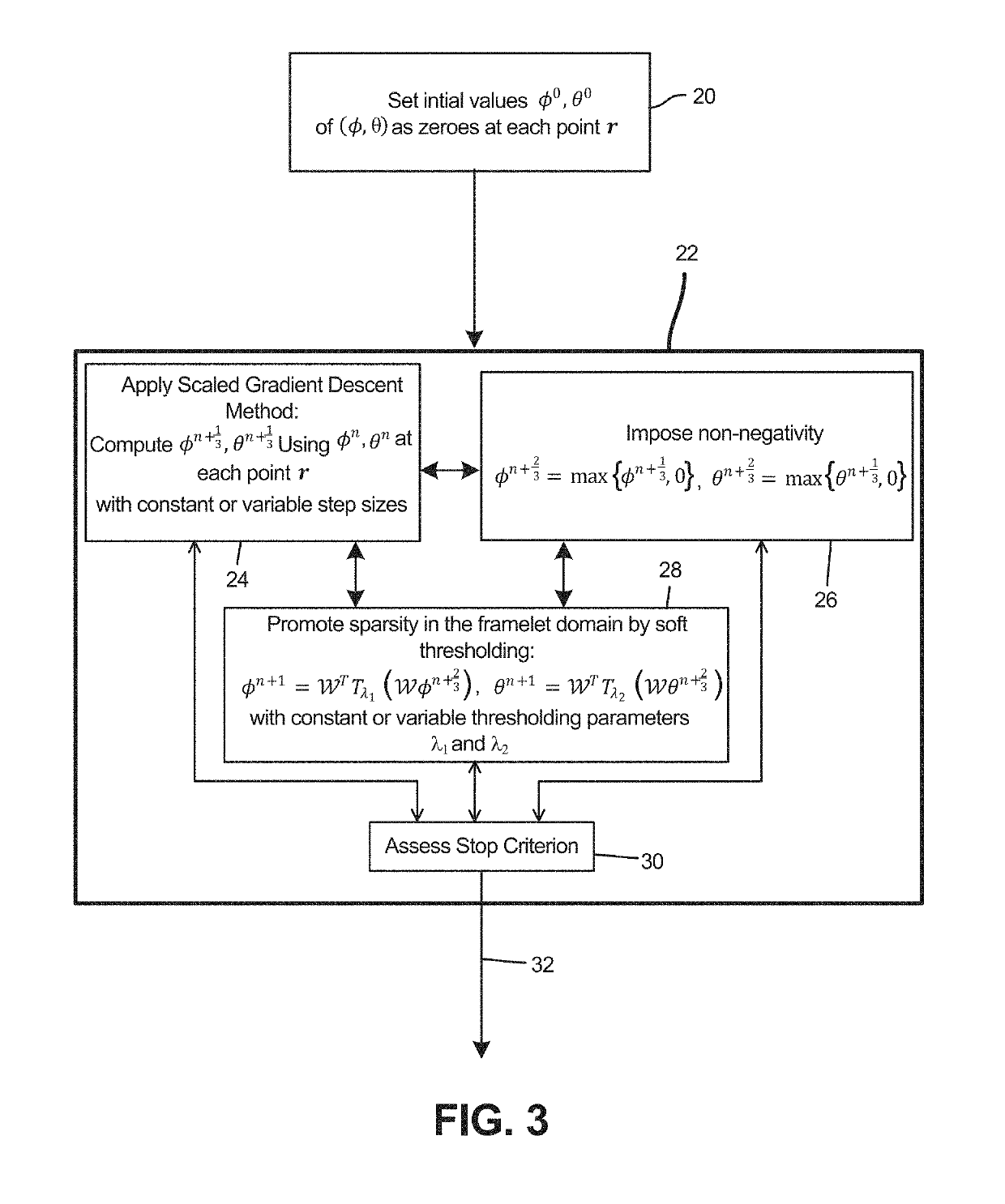Devices, systems and methods utilizing framelet-based iterative maximum-likelihood reconstruction algorithms in spectral CT
a spectral ct and maximum likelihood technology, applied in the field of acquisition and processing of ct images, can solve the problems of poor contrast resolution of linear attenuation coefficients reconstructed by the fbp algorithm, rare and expensive dual-energy ct machines, poor results in diagnosis of challenging lesions, etc., and achieve the effect of reducing the use of iodin
- Summary
- Abstract
- Description
- Claims
- Application Information
AI Technical Summary
Benefits of technology
Problems solved by technology
Method used
Image
Examples
example i
A. Synthesized Data
[0153]As best shown in FIGS. 6A-8C, a 2D Shepp-Logan phantom was used to assess the various implementations of the system. The Shepp-Logan phantom (“phantom”) is a widely-used synthesized phantom for testing algorithms in CT, and is well understood in the art. There are several ellipses in the phantom. In the present simulations, a variety of substances were placed in the ellipses to generate presently-disclosed example phantom and the corresponding reconstructed images.
[0154]FIGS. 6-8 are reconstructed images demonstrating one example showing that the disclosed algorithm can be applied to reconstruct less-dense substances, such as soft tissue, bone, and aluminum. The reconstructed images are shown in FIGS. 6A-8C. In these examples, a fan-beam imaging geometry was employed. In this example, the circular scanning locus is of radius 57 cm, and the diameter of the FOV is 22.4 cm corresponding to 672 detector bins, each element of which is 0.033 cm. The resolution of...
example ii
B. Sheep Head
[0167]To further assess the capacity of the presently-disclosed system, a sheep's head was scanned using cone-beam imaging geometry, as described previously. The distances from the X-ray source to the rotation center and the detector are 109.76 cm and 139.83 cm respectively. 1195 projections were collected under a fast-continuous-rotation scanning mode. The effective projection sequence used for reconstruction was extracted with a structure similarity (“SSIM”) based-method. Among the final effective projection sequence, 200 equispaced projections were used for reconstruction. The presently disclosed system and algorithm was utilized to reconstruct the central slice with 200 projection views. After the rotation center was located, two 512×512 components were reconstructed and used to obtain spectral images at any energy according to Eq. (9).
[0168]In the example of FIGS. 9A-D, a 101 spectra X-ray was used at 110 kV (as was shown above in FIG. 5) from 20 keV to 120 keV. I...
PUM
 Login to View More
Login to View More Abstract
Description
Claims
Application Information
 Login to View More
Login to View More - R&D
- Intellectual Property
- Life Sciences
- Materials
- Tech Scout
- Unparalleled Data Quality
- Higher Quality Content
- 60% Fewer Hallucinations
Browse by: Latest US Patents, China's latest patents, Technical Efficacy Thesaurus, Application Domain, Technology Topic, Popular Technical Reports.
© 2025 PatSnap. All rights reserved.Legal|Privacy policy|Modern Slavery Act Transparency Statement|Sitemap|About US| Contact US: help@patsnap.com



